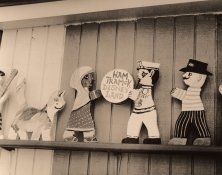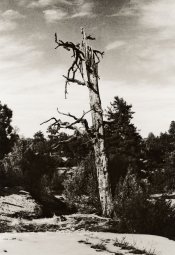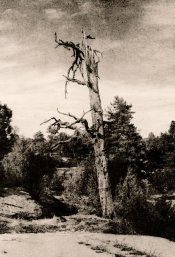grainyvision
Subscriber
I've formulated a developer I've titled "ModernLith". This is a developer that is ideal for lith printing on modern "non-lithable" papers. Though like all lith printing formulas there is plenty of room for modification. I won't bother copy-pasting the entire thing as it's extremely long.. But I'll give a quick summary and my favorite results here.
Full post with all of the details and additional scans etc: https://grainy.vision/blog/modernlith
Favorite papers:
* Ilford MGV -- Very flexible giving good results in all modifications and not overly slow to develop. Can give anything from cool brown tones to warm sepia colors.
* Fomapseed 133 RC -- Trends toward colder tones, especially with benzotriazole. Best suited for MOD2
* Ultra.EDU Ultra FB -- Trends toward cooler blacks and warmer highlights. Can be quite grainy, seems best suited for MOD2
The working solution formula:
There are modified formulas:
* MOD1 -- Mix standard 1L solution, then add 2ml of potassium bromide 10%, 1ml of sodium sulfite 20%, and 10ml of ascorbic acid 8%. --Gives warmer tones with most papers. Can give poor low contrast results on some papers.
* MOD2 -- Mix standard 1L solution but with only 5ml of ascorbic acid. Tends to give colder results. Tends to work better on many non-Ilford RC papers.
Favorite results are attached.
Full post with all of the details and additional scans etc: https://grainy.vision/blog/modernlith
Favorite papers:
* Ilford MGV -- Very flexible giving good results in all modifications and not overly slow to develop. Can give anything from cool brown tones to warm sepia colors.
* Fomapseed 133 RC -- Trends toward colder tones, especially with benzotriazole. Best suited for MOD2
* Ultra.EDU Ultra FB -- Trends toward cooler blacks and warmer highlights. Can be quite grainy, seems best suited for MOD2
The working solution formula:
- 10ml of hydroquinone 10% solution in propelyne glycol (1g of hydroquinone)
- 10ml ascorbic acid 8% solution in propelyne glycol (0.8g of ascorbic acid.. Can also be substituted most likely with ascorbic acid salts)
- 4ml of 20% sodium sulfite solution (0.8g sodium sulfite) — can be in the range of 3-6ml
- 60ml potassium oxalate 10% solution (6g potassium oxalate)
- 4ml potassium bromide 10% solution (0.4g potassium bromide)
- Add to 940ml of water, rinsing the containers to ensure all glycol solutions are mixed in
- 60ml sodium carbonate 20% solution (12g sodium carbonate) — probably ~10 or 11g potassium carbonate is actually recommended here, significantly easier to dissolve. 20% for sodium carbonate is almost the solubility limit
There are modified formulas:
* MOD1 -- Mix standard 1L solution, then add 2ml of potassium bromide 10%, 1ml of sodium sulfite 20%, and 10ml of ascorbic acid 8%. --Gives warmer tones with most papers. Can give poor low contrast results on some papers.
* MOD2 -- Mix standard 1L solution but with only 5ml of ascorbic acid. Tends to give colder results. Tends to work better on many non-Ilford RC papers.
Favorite results are attached.















